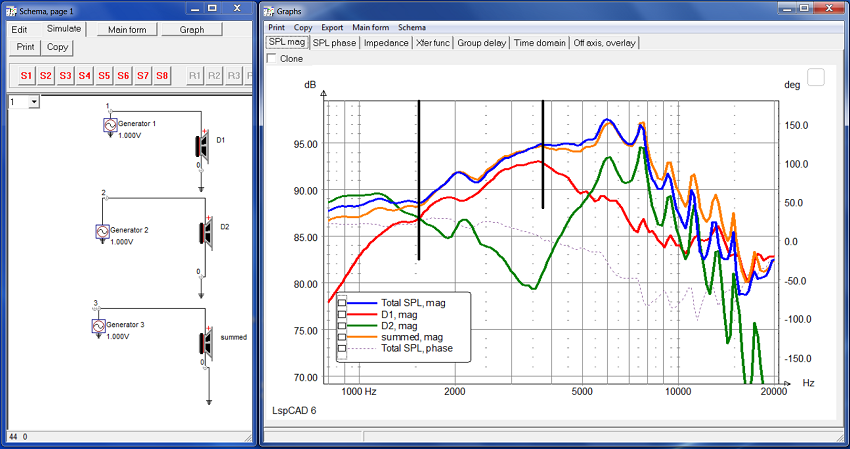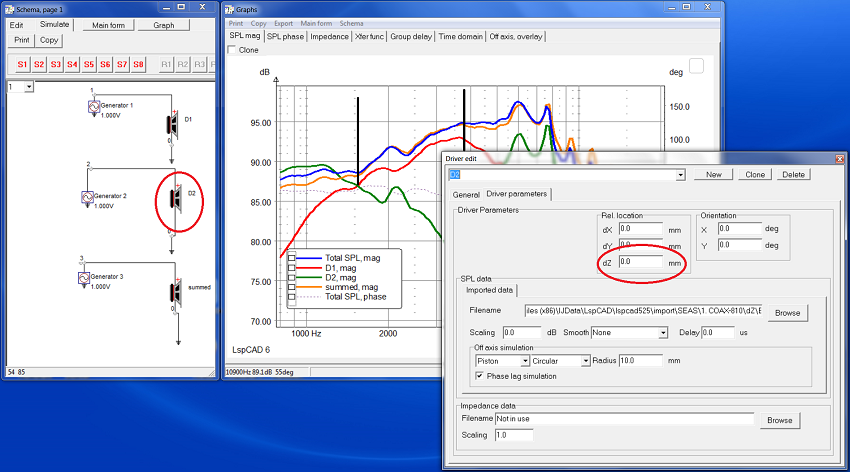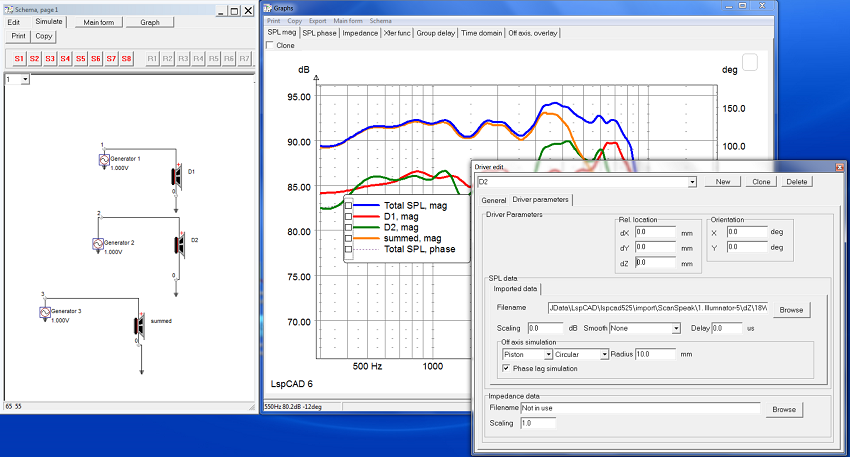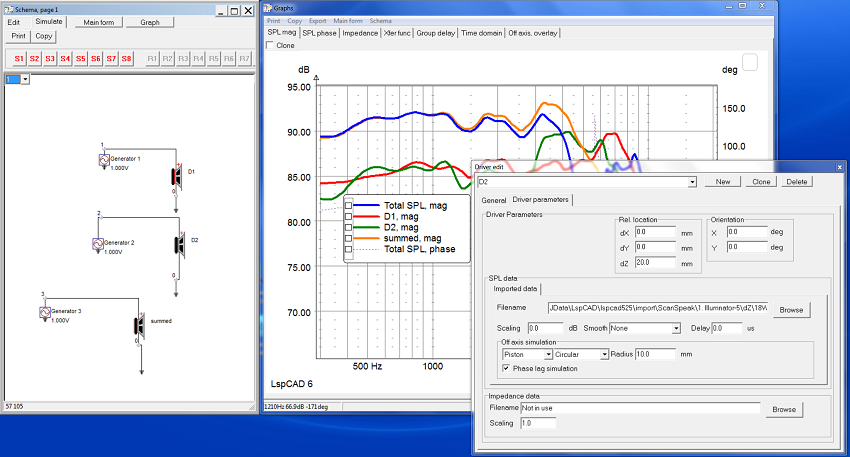Time alignment
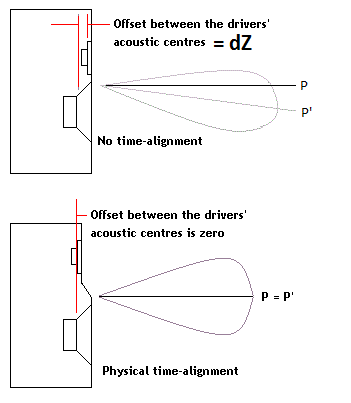
Get the background here from Wikipedia
1. To find out the difference in acoustic distance of the two drivers (mid and tweeter) we can do this: We place the microphone at 1 meter distance and record amplitude and minimum phase for both drivers and finally the summed response (impedance data not needed here). It is important the microphone is not moved at all during these measurements!!
2. Next we take the CLIO data files to LspCAD6 software and simulate a 3-way crossover with tweeter, mid and summed response as the three drivers. The measured summed response is disabled in the SPL/Xfer function, thus does not add to the total summed response. This will produce 4 graphs, tweeter, mid, mid+tweeter and summed response of mid+tweeter.
3. Finally we change dZ for middriver until summed response coincides with
mid+tweeter response at suggested point of crossover, because what we
also find is that the dZ is not consistent with frequency. Usually a
middriver will change its phase behavior because not all parts of the
cone may produce the same frequencies. At higher frequencies it may only
be the center of the speaker, e.g. dust-cap, that does what it should
do.
Once done we can start simulating our crossover with the correct dZ,
here 0 mm. Quite unusual, but this was a coaxial driver. For the
standard 5"+1" or 6"+1" we find something in the range of 20-30 mm.
Above we see the response of individual drivers
and summed response. Green is midbass, red is tweeter. Orange is summed
response of the drivers driven in parallel. Blue is the summed response
(calculated, not measured) from bass and tweeter. By changing dZ (see
graph below) for the midbass we can set the acoustic distance between
the two drivers until their summed response coincides with the measured
summed response (blue). Between the two black vertical lines the two
summed response graphs are coincident.
As can be seen the two graphs coincide between 1,600 and 4,000 Hz - and
fairly well way above and below. Actually the phase difference @ 1,000
Hz i only 17 deg.
Above the driver window inserted, displaying dZ for the midbass driver (encircled). Usually from a flat panel we have to insert some 20-30 mm here to make sure we simulate crossover that will also work when we start constructing the crossover. 20-30 mm is the distance the midbass driver is behind the tweeter when we mount them on a flat baffle, hence many of my recent constructions feature stepped baffle to time align driver and allow preferred crossover. On a flat baffle we often use asymmetrical crossover to compensate for the time difference. To my experience a true 2nd order filter from time-aligned drivers sound better than the typical 2nd/3rd order filter - and it requires fewer capacitors in series with the tweeter, certainly an advantage. To some extend the difference in acoustic depth can be compensated by using a sloped baffle, but this requires good off-axis response from both mid and tweeter and usually leaves a more narrow vertical listening window.
Bass-mid alignment, does it matter?
Above a ScanSpeak 18WU/8741T00 and a 12WU driver (experimental SS driver). dZ is set to zero and all the way up to above 2 kHz we really do not see a difference in measured summed response and predicted summed response.
Above the same exercise with 12WU offset by 20 mm. Really doesn't make any difference. So, making a stepped baffle for a bass and mid crossed at 500-1000 Hz doesn't pay off.
